Introduction
In the dynamic landscape of modern business operations, Directors of Operations Efficiency are increasingly turning to Robotic Process Automation (RPA) to streamline workflows, enhance productivity, and drive sustainable growth. This comprehensive guide offers a step-by-step approach to successfully implementing RPA within an organization. From assessing automation opportunities and identifying suitable processes to building a compelling business case and selecting the right vendor, each phase is meticulously designed to maximize the impact of RPA.
Additionally, insights into managing the RPA lifecycle, change management, and overcoming common challenges provide practical solutions to ensure seamless integration and long-term success. Embrace these strategies to harness the full potential of RPA and transform operational efficiency.
Step 1: Assessing RPA Opportunities
Start by thoroughly analyzing your organization’s current processes to pinpoint where RPA can offer the most value. Focus on identifying repetitive, rule-based tasks that are time-consuming and resource-intensive. Interact with staff to acquire understanding of their everyday difficulties, ensuring a comprehensive perspective on possible opportunities for mechanization. A comprehensive analysis of the 300 largest companies by market capitalization showed that those implementing RPA observed a significant impact on their environmental, social, and governance (ESG) factors. The Total Economic Impact study by Forrester Research highlighted a $4.2 million improvement in employee experience and retention for companies using RPA. This highlights the significance of selecting the appropriate instruments and equipping the workforce for a seamless change, ultimately nurturing a culture of ongoing enhancement and optimizing the advantages of mechanization.
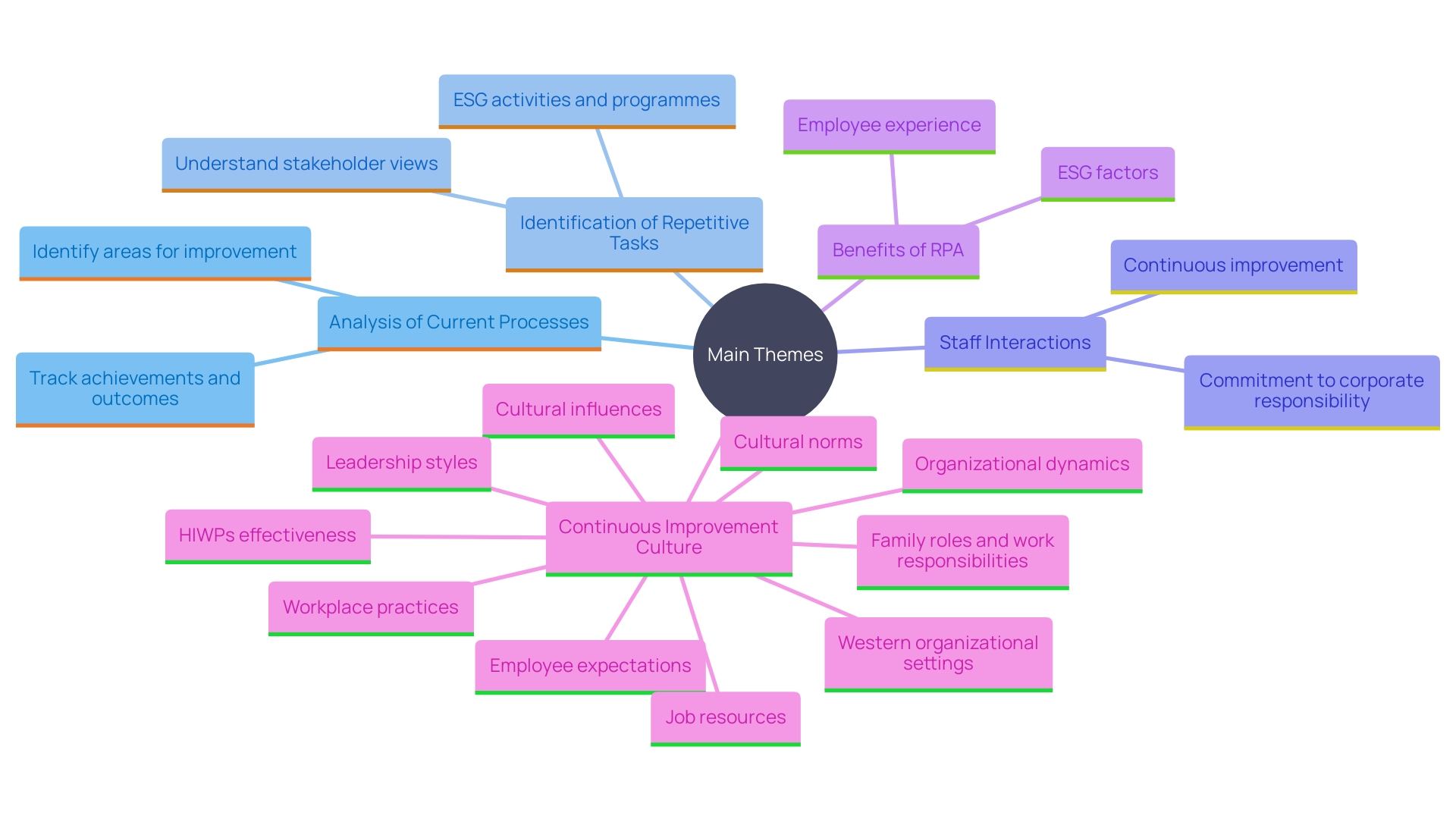
Step 2: Identifying Suitable Processes for Automation
‘Once opportunities are evaluated, prioritize methods that are the best fit for mechanization.’. Begin by evaluating criteria such as transaction volume, stability, and complexity. Simple, high-volume tasks are often prime candidates. Utilize tools like the Task Automation Index, which ranks tasks based on standardized input, well-defined rules, repetitiveness, data dependency, and objective outputs. This thorough ranking method guarantees that you concentrate on procedures that are not only appropriate for mechanization but also coincide with your organizational objectives.
For instance, when the finance division of Mass General Brigham hospital system encountered obstacles in monitoring healthcare providers, they reorganized their workflow for mechanization. By automating data collection and highlighting necessary actions, they significantly improved efficiency.
Additionally, always consider the resource allocation required for successful automation. Regular evaluations can identify inefficiencies and provide insights for enhancement. Gathering input from workers who engage with automated processes can reveal practical challenges and further improve efficiency. Aim to create a shortlist of methods that not only meet the technical criteria but also align strategically with your organizational goals.
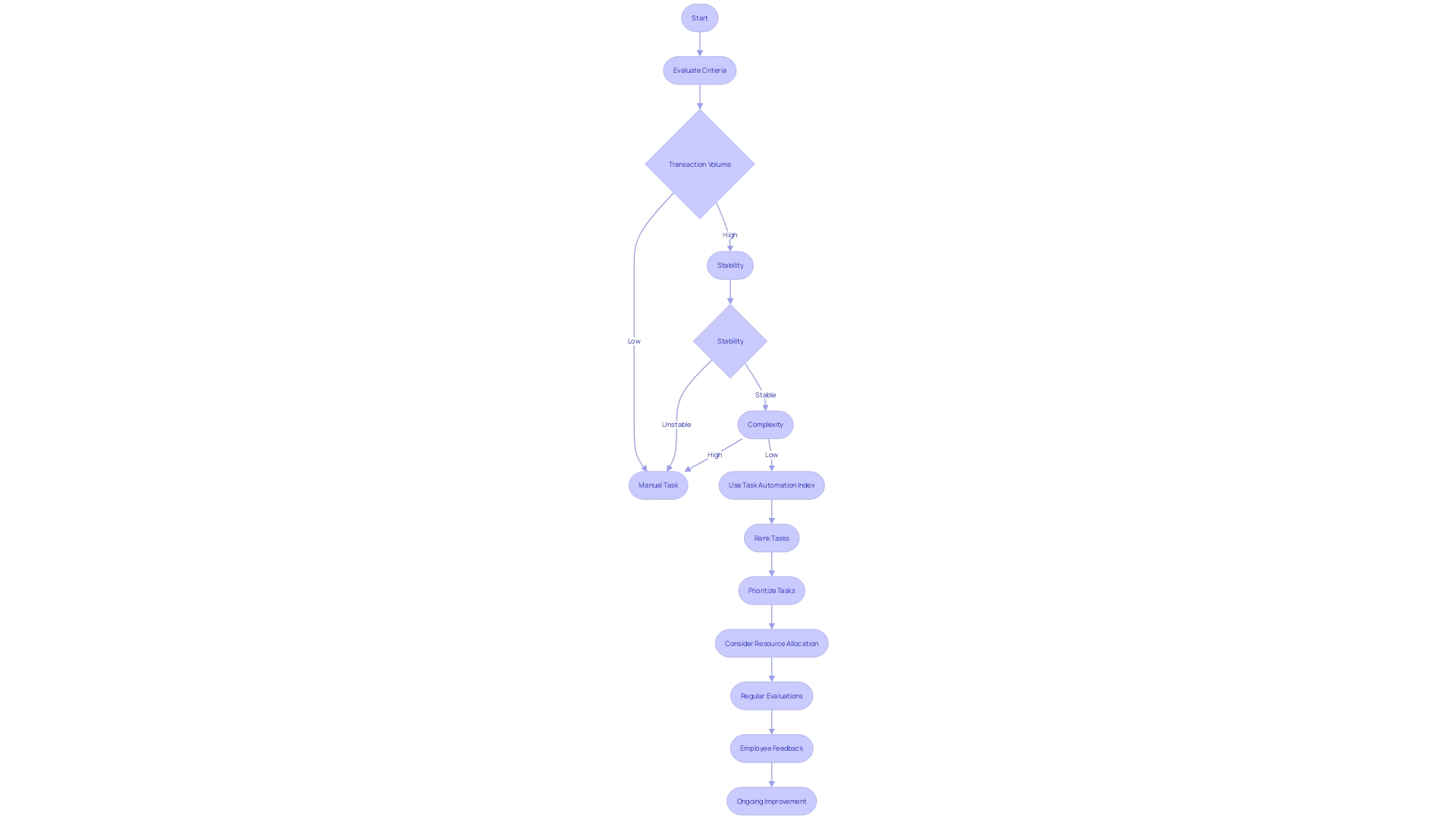
Step 3: Building a Business Case and Defining Objectives
Developing a robust business case for Robotic Process Automation (RPA) is essential to outlining its potential benefits, such as cost savings, efficiency improvements, and error reduction. Start by selecting RPA and AI solutions that align with your specific needs and existing infrastructure. This alignment guarantees that the tools you invest in will integrate smoothly into your existing infrastructures and provide maximum value.
Next, clearly define measurable objectives and key performance indicators (KPIs) to track success. This could include metrics like the reduction in processing time, decrease in error rates, and cost savings. For example, RPA can perform repetitive tasks at a much faster pace than humans and work 24/7, eliminating the need for overtime pay or temporary staff during peak seasons.
Incorporate a continuous improvement approach, treating Hyperautomation as an ongoing journey. Continuously observe and enhance procedures to maximize the benefits, ensuring that the system evolves with your business needs. As emphasized in a recent Harvard Business Review article, companies like Shell are reengineering their supply chain, manufacturing, and maintenance methods with AI and RPA. This includes automating inspection processes using robots and drones.
Providing your team with the abilities and understanding to enhance the new technological frameworks is also essential. Upskilling employees prepares them for the transition and helps mitigate resistance to change. As emphasized by industry experts, automation has always required human partnership to ensure stability and effectiveness.
In summary, a well-defined business case with clear objectives, continuous improvement, and workforce readiness will guide your RPA project and secure stakeholder buy-in, ultimately leading to significant operational benefits.
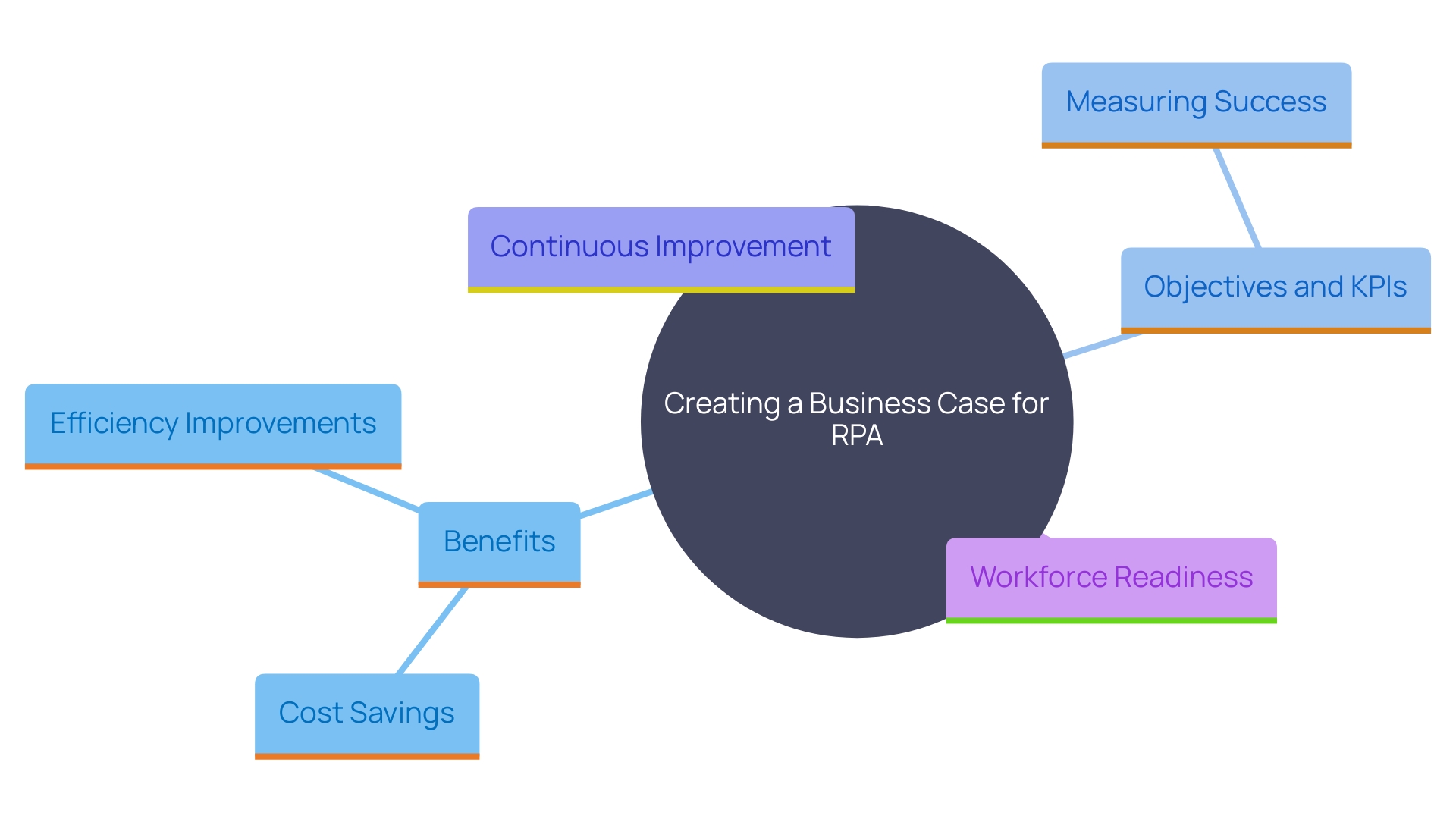
Step 4: Selecting the Right RPA Vendor
When researching and selecting an RPA vendor, it’s crucial to align their capabilities with your business needs. Consider scalability, user-friendliness, support services, and integration capabilities with existing systems. For example, Delivery Hero, operating in over 70 countries with 53,000 employees, faced significant challenges with employees being locked out of their accounts. By implementing an automated solution, they drastically reduced the time spent on account recovery, showcasing the importance of seamless integration and support.
Engage in demos and solicit feedback from other users to ensure the vendor’s solution meets your requirements. ‘Real-world success stories, like Delivery Hero’s, highlight the value of choosing a vendor that can provide robust support and smooth integration with existing systems.’. This approach will help you leverage RPA to its fullest potential, optimizing efficiency and productivity within your operations.

Step 5: Developing a Proof of Concept and Pilot Implementation
To effectively test your RPA solution, start by creating a proof of concept (PoC) in a controlled environment. Choose a method from your shortlist that is manageable yet representative of the larger implementation. For instance, Magic Valley Produce, a leading supplier of potatoes, faced challenges with labor shortages and limited floorspace in their palletizing area. By conducting a PoC, they identified that traditional industrial robots were impractical due to space constraints and safety requirements, while cobots lacked the necessary lifting power for their 52.5-pound boxes. This real-world example underscores the importance of a PoC in addressing unique operational challenges before full-scale deployment.
Monitor the results closely to refine your approach. For high-volume, repetitive processes, RPA can be the most cost-effective and efficient solution, as noted by industry experts. However, it requires continuous monitoring and management to ensure stability and effectiveness. The global sales of collaborative robots (cobots) reflect their growing importance, with sales doubling from 126 thousand units in 2020 to 242.03 thousand units in 2021. This trend highlights the increasing recognition of cobots’ benefits across various industries. By carefully analyzing the PoC outcomes, you can fine-tune your RPA implementation strategy, ensuring it aligns with your organization’s specific needs and goals.
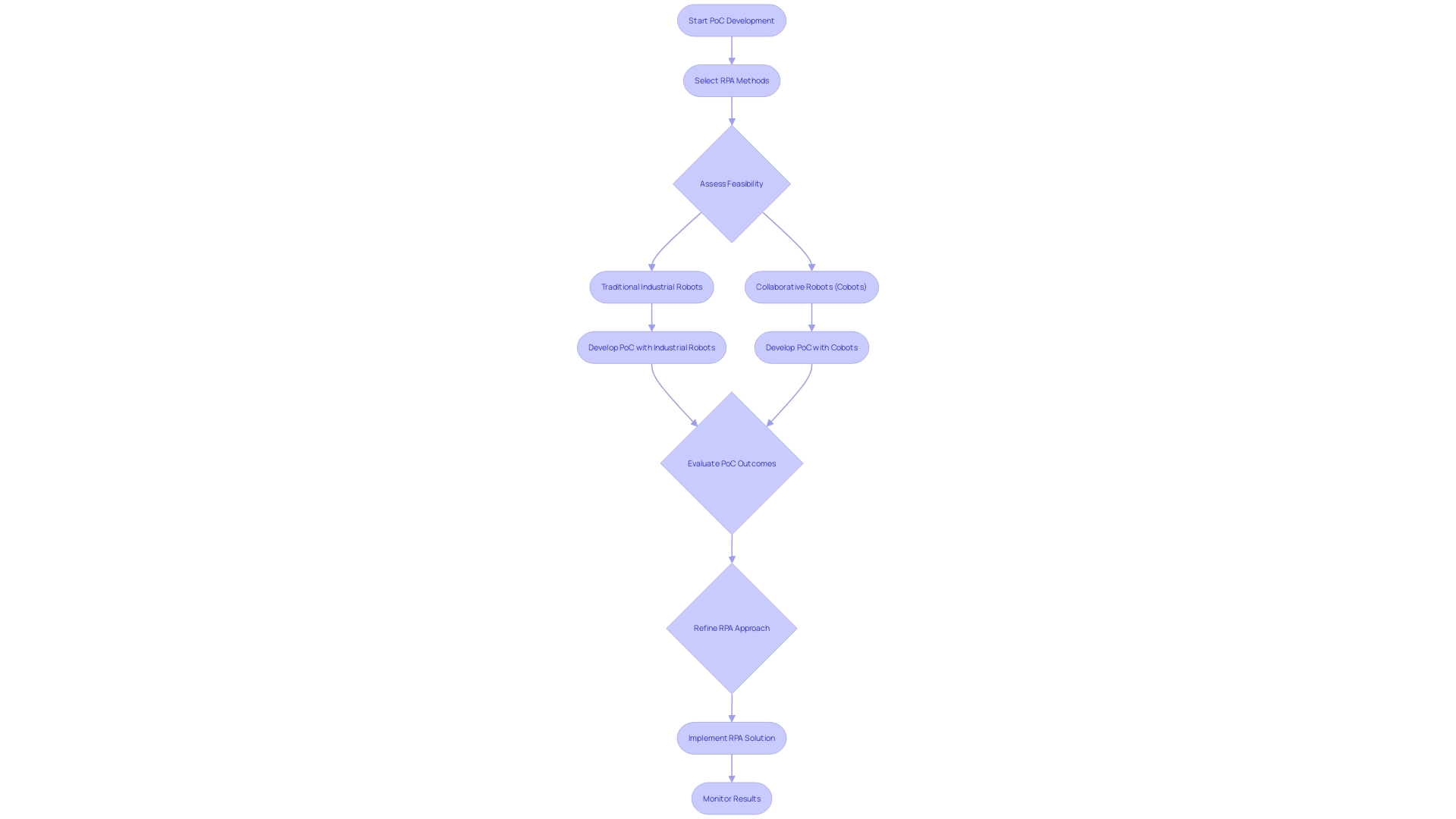
Step 6: Setting Up an Implementation Plan and Resource Organization
Creating a thorough execution strategy is essential for the success of any mechanization effort. Start by outlining clear timelines, resource allocation, and defining roles and responsibilities for all involved parties. This structured approach ensures that every stakeholder is informed and aligned with the project’s goals.
To illustrate, the finance department at Mass General Brigham hospital faced a bottleneck in tracking healthcare providers. By creating a dedicated team focused on automated processes that collaborated closely with the finance department, they restructured workflows and developed a mechanized tool. This tool significantly improved the efficiency of data collection and organization, showcasing the importance of collaborative efforts and clearly defined roles.
Moreover, establishing a robust governance structure is essential to oversee the implementation process and address any challenges. This is particularly relevant in sectors like healthcare, where the integration of automation must comply with strict regulations and standards. A well-defined governance framework ensures that the project remains on track and any issues are promptly addressed.
In the context of technological advancements, companies like 1X Technologies are pioneering new models to train robotics systems more efficiently. Their approach highlights the importance of continuous innovation and adaptation in the implementation process. By leveraging raw sensor data from robots, 1X Technologies has bridged the gap between simulation and real-world application, underscoring the need for dynamic and responsive governance structures.
Statistics further support the increasing significance of mechanization. For instance, the global sales of collaborative robots have seen a significant rise, from 60.9 thousand units in 2018 to an estimated 242.03 thousand units in 2021. This trend suggests an increasing acknowledgment of the advantages of mechanization across diverse sectors, highlighting the necessity for well-structured and carried out execution plans.
Integrating these components into your execution strategy will not only simplify the process but also improve overall effectiveness, guaranteeing that your organization gains the maximum advantages of mechanization.
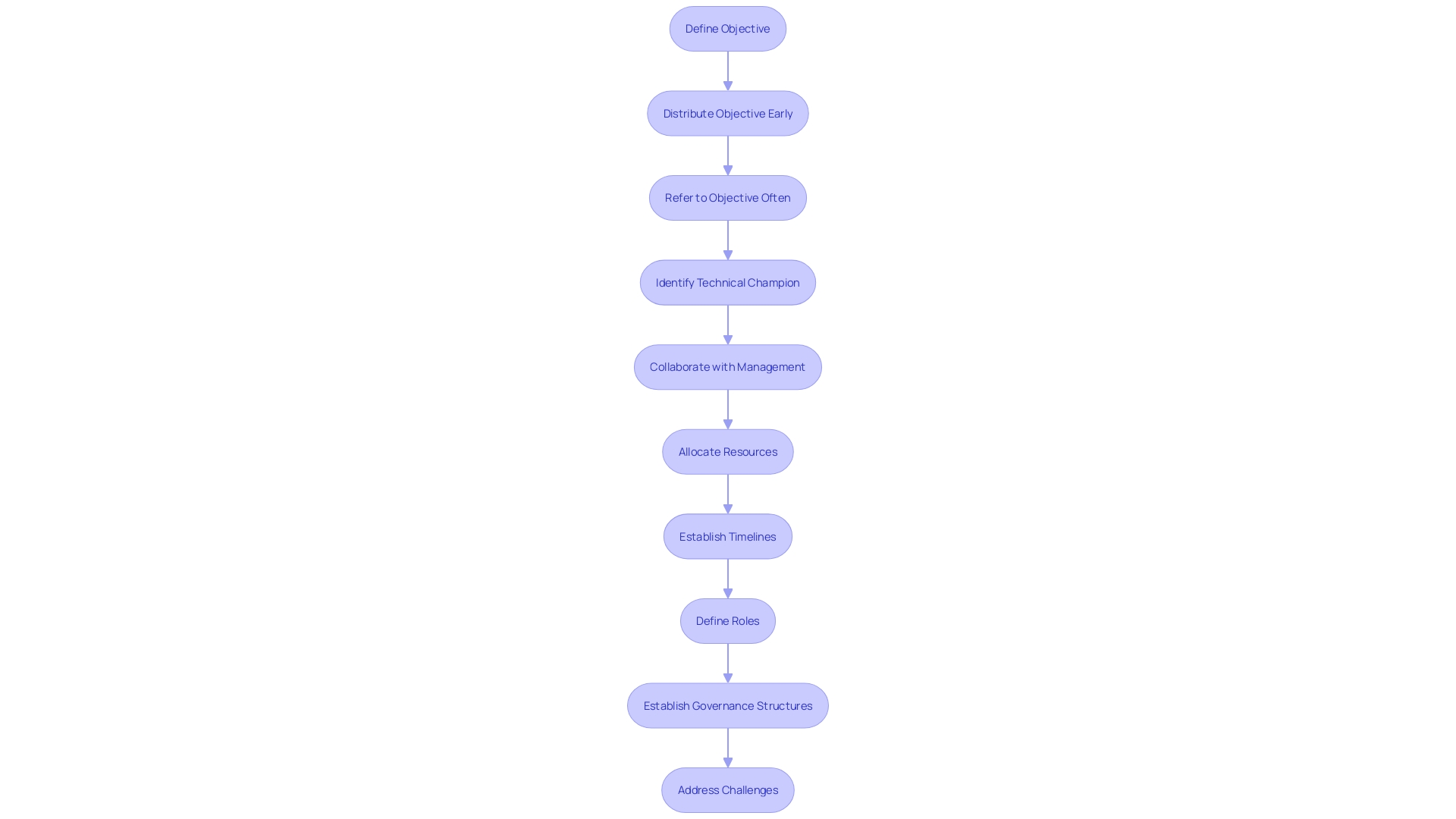
Step 7: Managing the RPA Lifecycle and Change Management
Managing the RPA lifecycle effectively requires a structured approach, starting from development and extending through maintenance. A noteworthy example is the finance department at the Mass General Brigham hospital system in Boston. Confronting inefficiencies in monitoring healthcare providers, they established a team focused on technology that worked with finance specialists to reorganize workflows, ultimately creating a tool that simplified data collection and organization. This not only alleviated bottlenecks but also enabled front-line employees to focus on higher-value tasks.
Change management strategies are crucial to easing transitions for employees. According to Dieter Kern, Cindy Zhong, and Lukas David Hoffmann, combining new technologies with proven methods can significantly mitigate change fatigue and enhance the effectiveness of change management programs. This is particularly important as organizations navigate evolving customer needs, technological advancements, and competitive pressures.
Training and support play a pivotal role in encouraging acceptance and engagement with new RPA processes. The achievement of the Mass General Brigham hospital network demonstrates the significance of providing staff with the essential abilities and understanding to enhance mechanized processes. This approach aligns with the insights from UiPath’s global survey, which emphasizes the need for continuous learning and adaptation in the automation journey. By investing in the right tools and fostering a culture of continuous improvement, organizations can unlock the full potential of RPA and drive operational efficiency.
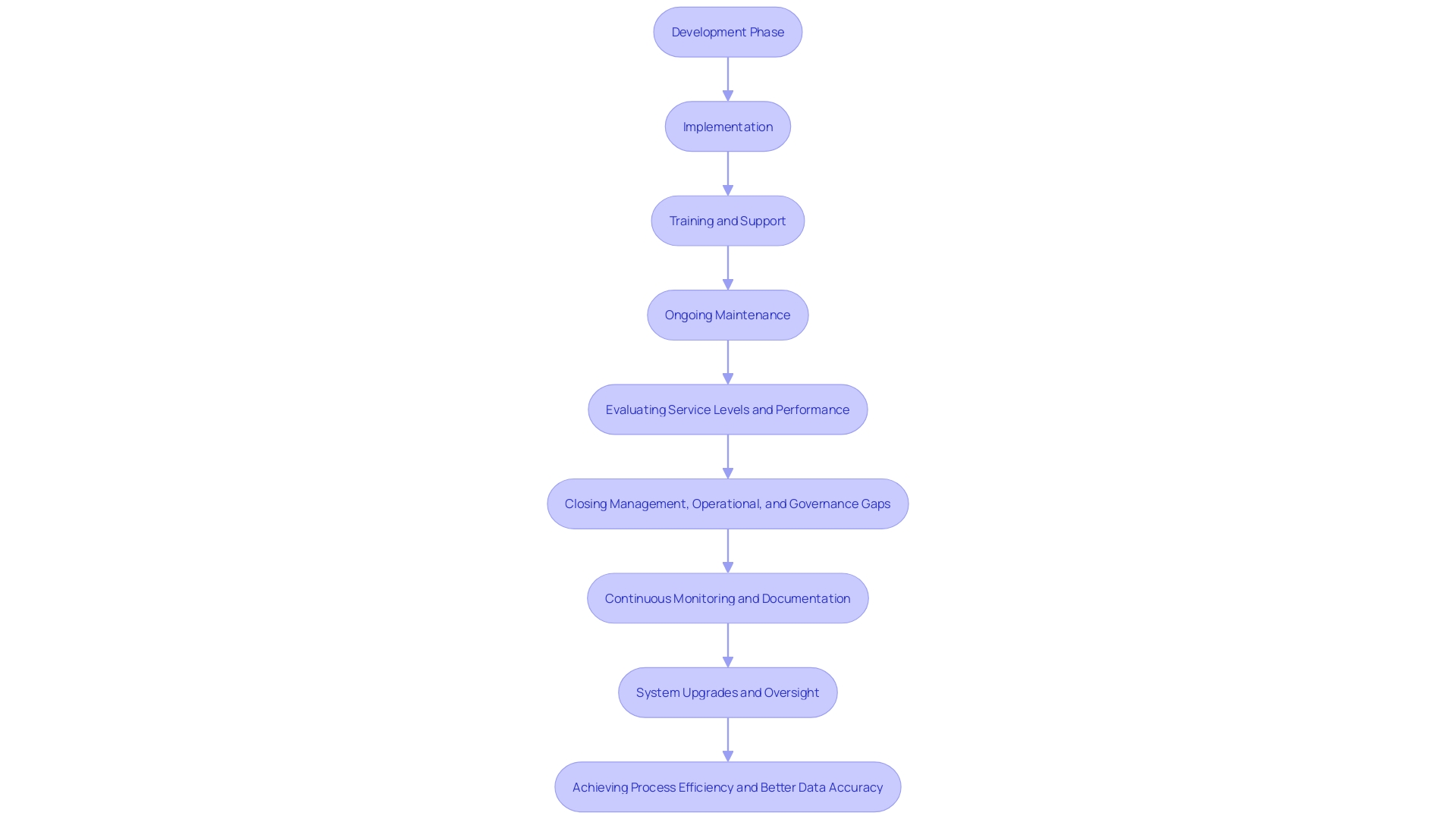
Key Considerations for Successful RPA Implementation
Monitoring compliance, security, and data management is crucial during RPA implementation. Take M&T Bank, for example, which faced stringent regulatory requirements due to the highly sensitive data involved in banking transactions. They addressed this by establishing organization-wide Clean Code standards to maintain software quality and compliance. Similarly, regular strategy reviews and adjustments are necessary to adapt to changing business needs. The experience of HUD during the government shutdown highlights the importance of agility. Within 90 days, they deployed a UiPath bot to automate housing contract expirations, demonstrating the need for continuous improvement and stakeholder validation. As reiterated by industry specialists, “You can automate, but you still have to engage.” This continuous involvement guarantees your RPA solutions provide the best ROI while adapting to your organization’s needs.

Common Challenges and How to Overcome Them
Anticipate challenges such as resistance to change, integration issues, and scalability concerns. Address these proactively by fostering a culture of collaboration and transparency. Engage stakeholders early and provide continuous support to mitigate resistance and facilitate a smoother transition. For example, the finance department of Mass General Brigham hospital system faced significant bottlenecks in managing provider data. By forming a dedicated automation group and engaging a specialist in workflows, they reorganized procedures and created a tool that streamlined data collection and organization. This approach not only alleviated the burden on front-line employees but also allowed for scalability to manage future growth. Additionally, effective communication channels and regular updates ensure that team members understand their roles and responsibilities, paving the way for successful implementation. Embracing a structured approach to organizational change management, which involves preparation, implementation, and follow-through, can further enhance the transition process and maximize the benefits of the change.
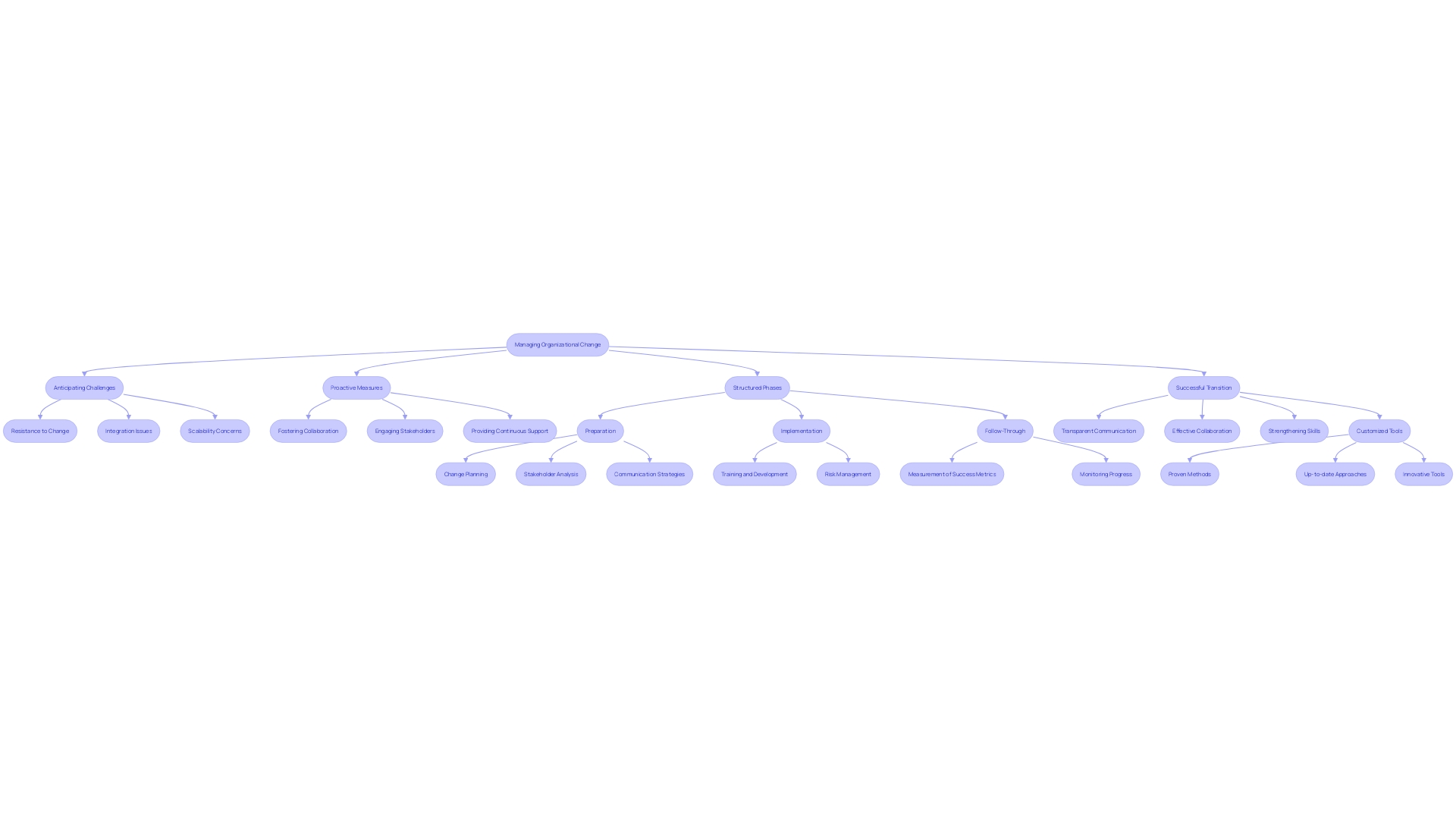
Conclusion
The implementation of Robotic Process Automation (RPA) presents a transformative opportunity for organizations aiming to enhance operational efficiency. By assessing RPA opportunities, identifying suitable processes, and building a solid business case, organizations can lay a strong foundation for successful automation initiatives. Engaging employees and utilizing tools like the Task Automation Index ensures that the right processes are prioritized, aligning automation efforts with strategic goals.
Selecting the right RPA vendor is equally crucial, as it determines the scalability and integration capabilities of the solution. A well-planned proof of concept and pilot implementation can identify potential challenges early, allowing for adjustments before full-scale deployment. Establishing a comprehensive implementation plan with clearly defined roles and responsibilities enhances collaboration, ensuring that all stakeholders are aligned and informed throughout the process.
Managing the RPA lifecycle effectively requires ongoing change management strategies to support employees during transitions. Continuous training and support foster a culture of acceptance and engagement, ultimately unlocking the full potential of automation. Monitoring compliance and addressing common challenges such as resistance to change and integration issues are essential for maximizing the return on investment.
In summary, harnessing RPA’s capabilities requires a structured and proactive approach, emphasizing collaboration, continuous improvement, and adaptability. By embracing these strategies, organizations can navigate the complexities of automation and achieve significant operational benefits, driving sustainable growth and enhanced productivity.

